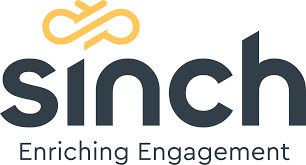metamorworks/iStock via Getty Images
The following segment was excerpted from this fund letter.

Since our initial investment in March-2020, Sinch revenue has increased by 400% to SEK 25 billion and adjusted EBITDA by 450% to SEK 3.2 billion – exceeding my expectations by about 3x and doing it faster as well. This growth was achieved organically to some extent but mainly due to acquisitions. In this period, Sinch number of shares outstanding has increased by 39% (adjusted for splits) and they have taken on SEK 10 billion of additional debt to finance acquisitions.
Our initial investment was done at an enterprise value of approximately SEK 22 billion, but additional purchases were made at higher prices, which has now caused this investment to be materially underwater. Despite achieving more than a 5-fold increase in revenue and profits, Sinch shares are currently priced about 5% lower than our initial purchase price in March-2020. So, what is going on?
It goes without saying that higher interest rates and generally negative market sentiment have contributed to today’s low share price. Let’s put that aside for now, since that doesn’t tell the whole story.
First of all, is adjusted EBITDA a good proxy for Sinch pretax owner earnings? Deprecation & Amortization are not cash outlays but mainly accounting write-downs of acquired goodwill, so the D&A part is ok. What about adjusted EBITDA? Here Sinch adds back acquisition costs, integration costs, and share-based incentive programs.
Acquisition costs are clearly one-time in nature, but the other two are not. While integration costs should diminish over time, deducting SEK 200 million on an annual basis from their reported adjusted EBITDA currently seems fair. Deducting another SEK 200 million for interest expenses should give you a decent proxy for Sinch pretax owner earnings.
Let’s now look at some operating factors that affect valuation. While the achieved growth is indeed very strong, organic growth will always be a more colorful feather in the hat, and it’s clear that the whole Communication-Platform-as-a-Service (CPaaS) industry has become way more competitive and commoditized than it was 2-3 years ago.
While Sinch many direct connections to operators around the world which they have established over 15 years are important in many use cases, especially critical messages where high deliverability is very important, they are not exclusive in enough geographies to earn them a lot of pricing power with customers – especially since one of their main competitors Twilio recently started a new initiative they call “in and up” which means that they offer customers very attractive rates on messaging to get a foot in the door and then hope to be able to upsell other higher-margin software products such as contact centers, email, etc.
In addition, operators that sell SMS capacity to Sinch have lately increased prices, quite significantly in some geographies too, as they are looking for new ways to grow revenue given the mature markets they operate in, and because they seemingly can. As a result, Sinch has recently been squeezed in the middle between revenue-hungry operators and competitors who do not prioritize profitability.
This has caused a hit to their messaging margin. One of the things I got wrong here is that I expected Sinch to have more say on the pricing dynamics as the crucial middleman. This does not seem to be the case so far.
So, what does the future look like?
While Sinch used to get the vast majority of their revenue and profit from their traditional enterprise messaging business, it will now constitute less than half of their gross profit in 2022, and it is likely to keep declining as a share of the whole.
Due to Sinch three latest and largest acquisitions by far – Inteliquent (voice services), MessageMedia (mobile messaging for SMBs) and Pathwire (email) – Sinch is no longer primarily an API provider for sending SMS messages, and its overall margin profile should improve materially compared to the recent past. This will all become more clearly visible in 2022 as these acquisitions are fully consolidated in reported results.
Market commentators and media tend to focus excessively on the recent past and in particular on how much certain stock prices have fallen from a recent high, while the only thing that really matters in investing is the current price of a company in relation to its intrinsic value.
Combining all recent acquisitions with Sinch results over the past twelve months, we currently have a price in the market of around 13 times pretax owner earnings. This is for one of the leading companies in an industry that is growing rapidly and which I expect will continue to grow at high rates for the foreseeable future.
To give you one hopefully familiar example of why this industry is growing fast, multifactor authentication (MFA) is one of the larger use cases CPaaS companies help facilitate. You may know it as 2-factor authentication (2FA) which you perhaps use to secure your Apple or Facebook account. One recent global survey found that only 45% of small and medium-sized companies have set up MFA to secure their systems. More should come.
I expect Sinch to grow with the industry at more than 15% per year. The question is what level of profitability that will be achieved.
It does not seem feasible that companies with their core business in other industries such as e-commerce, airlines, ride sharing, etc. will have direct contracts with dozens or even hundreds of operators, and vice versa, that operators will have direct contracts with thousands of companies. One API seems way simpler and more cost-efficient. There should thus be a place for CPaaS providers here long-term or at least until we don’t use SMS messaging anymore, since they have an essential function in the ecosystem where they sit as the relay bridge between telecom operators, customers, and end users.
There should also be a limit to how much operators will raise prices as aggregators give them a lot of traffic which is possible as aggregators get large message volumes from customers that they spread out over multiple operators in different geographies. Operators should not want to price themselves out of this lucrative and growing market.
All in all, growth should be good and a steady-state blended margin of more than 10% should be achievable for Sinch over time as the acquired voice, email and SMB messaging businesses will help bring it up.
Sinch is the clear #2 CPaaS player after Twilio (TWLO), it does seem to have the broadest geographic messaging coverage, and I believe it will have a place in this industry in the future. In contrast to most (if not all) of their competition, Sinch has a long record of proven profitability which increases the likelihood that they remain standing in the industry when all the smoke has cleared.
Having said that, I do not currently see the same upside as I did before. Capitalism being what it is, in a fast-growing and lucrative industry with relatively low barriers to entry in each local geography, core profitability seems likely to remain under pressure.
Given how the industry has developed, a lower valuation per profit dollar is warranted to some extent. In my opinion, just not this low. Insiders agree: the CEO, CFO, Chairman, and some of the founders who are also Sinch largest shareholders, have been buying shares along the way down ever since the enterprise value was above SEK 100 billion.
To sum up, if Sinch margins stabilize or improve from here, which is possible through industry consolidation, more rational competition, passing on operator price increases to customers over time which has historically been possible, successful cross-selling of newly acquired products, or through recently implemented cost control measures – this investment should work out well in the end. If messaging margins continue its decline, and email/voice margins start following suit, it most likely won’t.
Editor’s Note: The summary bullets for this article were chosen by Seeking Alpha editors.


Be the first to comment